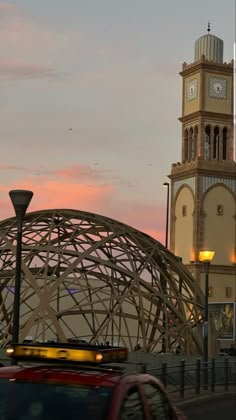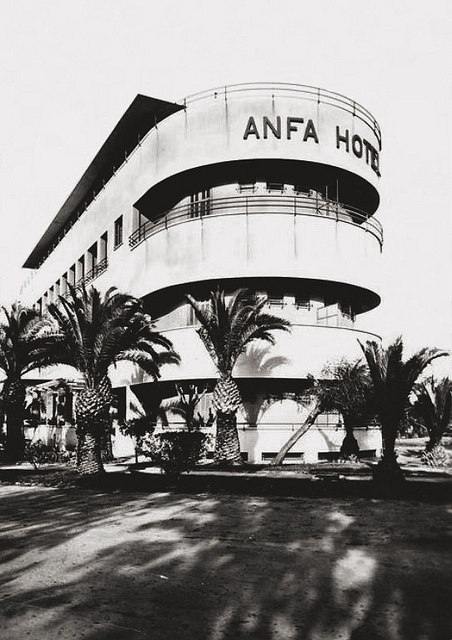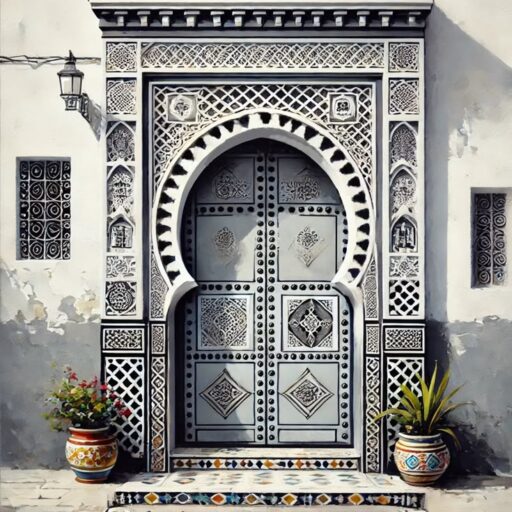Anfa Tracing the Ancient Roots of Modern Casablanca
Before the glittering skyscrapers and bustling port of modern Casablanca came to dominate Morocco’s Atlantic coast, there was Anfa. This ancient settlement, whose name is Berber for “the top,” holds the key to understanding the very foundations of what is now Morocco’s economic powerhouse. Its history is a captivating tapestry woven with tales of early Berber ingenuity, Roman trade, pirate havens, and colonial ambition.
From Ancient Berbers to Roman Outposts: The origins of Anfa stretch back millennia. By the 10th century BC, the area was already settled by ingenious Berber communities, who recognized the strategic value of its coastal location. Later, the Phoenicians used it as a trading post, a testament to its early importance in maritime commerce. The Romans followed, establishing a commercial port known as “Anfus” around 15 BC. While its Roman presence might have been more commercially focused than militarily fortified, discoveries of Roman coins and evidence of trade with other Roman cities like Volubilis underscore its role in the ancient world.
The Rise and Fall of the Barghawata Kingdom: Perhaps one of Anfa’s most significant periods was its time as the capital of the Barghawata kingdom. This independent Berber state emerged around 744 CE, thriving in the region between the Bou Regreg and Oum er-Rbia rivers. The Barghawata held sway for centuries, cultivating a distinct cultural and religious identity until they were eventually conquered by the Almoravids in 1068, who swept across Morocco establishing their own vast empire.CASABLANCA
A Port of Pirates and Portuguese Destruction: Under the Marinids in the 14th century, Anfa regained prominence as a crucial port. However, in the early 15th century, it once again asserted itself as an independent state, becoming, notably, a safe harbor for pirates and privateers. This lucrative but disruptive activity inevitably drew the attention of European powers. In 1468, the Portuguese launched a devastating attack, destroying much of the town and forcing its inhabitants to flee.
The Portuguese later returned in 1515, building a military fortress on Anfa’s ruins and renaming it “Casa Branca” (White House). This Portuguese presence continued for over a century, until the devastating Lisbon earthquake of 1755 weakened their hold, allowing Moroccan Sultan Mohammed ben Abdallah (1757-1790) to reclaim and rebuild the city, giving it the Arabic translation of its Portuguese name: “Dar El Beïda,” which eventually evolved into Casablanca.
Rebirth and the Seeds of Modernity: From a small, rebuilt town, Anfa (now Casablanca) began its slow but steady ascent in the 19th century, driven by its strategic port. It became a vital hub for wool exports to the burgeoning European textile industry, attracting European traders and cementing its role as a key commercial counter for North Africa.
The most transformative period for Anfa, however, came with the French Protectorate in the early 20th century. Recognizing its immense potential, the French embarked on a monumental urban and industrial expansion, transforming the once-modest port into a bustling metropolis. Under architects like Henri Prost, modern Casablanca emerged, with its wide boulevards, European-inspired architecture blending with Moroccan aesthetics, and a booming economy.
Anfa Today: A Legacy Preserved: Today, “Anfa” is not just a forgotten historical name; it’s a vibrant district in the oldest part of modern Casablanca. While much of the ancient structures were destroyed and rebuilt over centuries, the spirit of Anfa endures. Recent urban development projects, like “Casa Anfa,” aim to create a new urban center on the historic site of the former Anfa airport, incorporating green spaces, residential areas, and cultural hubs, including a new photography museum in the old terminal building. This signifies a conscious effort to preserve and integrate Anfa’s rich heritage into Casablanca’s dynamic future.Casablanca
From a Berber settlement to a Roman port, a pirate haven to a colonial stronghold, Anfa’s story is a microcosm of Morocco’s own layered history. It reminds us that beneath the modern facade of Casablanca lies a deep and fascinating past, continually shaping the identity of this remarkable city.
أنفا تتبع الجذور العريقة للدار البيضاء الحديثة
قبل أن تهيمن ناطحات السحاب المتلألئة وميناء الدار البيضاء الحديثة الصاخب على ساحل المغرب الأطلسي، كانت أنفا موجودة. هذه المستوطنة القديمة، التي تعني “القمة” بلغة أمازيغية، تحمل مفتاح فهم أسس ما يُعرف اليوم بالقوة الاقتصادية للمغرب. تاريخها نسيجٌ آسرٌ منسوجٌ بحكايات عن براعة الأمازيغ الأوائل، والتجارة الرومانية، وملاذات القراصنة، والطموح الاستعماري.
من الأمازيغ القدماء إلى البؤر الاستيطانية الرومانية
تمتد أصول أنفا إلى آلاف السنين. بحلول القرن العاشر قبل الميلاد، كانت المنطقة مأهولةً بمجتمعات أمازيغية بارعة، أدركت القيمة الاستراتيجية لموقعها الساحلي. لاحقًا، استخدمها الفينيقيون كمركز تجاري، دليلًا على أهميتها المبكرة في التجارة البحرية. تبعهم الرومان، فأنشأوا ميناءً تجاريًا يُعرف باسم “أنفوس” حوالي عام 15 قبل الميلاد. في حين أن الوجود الروماني ربما كان أكثر تركيزًا على الجانب التجاري منه على الجانب العسكري، إلا أن اكتشافات العملات الرومانية وأدلة التجارة مع مدن رومانية أخرى مثل وليلي تؤكد دورها في العالم القديم.
صعود وسقوط مملكة برغواطة
لعل إحدى أهم فترات أنفا كانت فترة كونها عاصمة لمملكة برغواطة. نشأت هذه الدولة البربرية المستقلة حوالي عام 744 ميلادي، وازدهرت في المنطقة الواقعة بين نهري أبي رقراق وأم الربيع. سيطرت برغواطة لقرون، ونمت هوية ثقافية ودينية مميزة حتى غزاها المرابطون في نهاية المطاف عام 1068، الذين اجتاحوا المغرب وأسسوا إمبراطوريتهم الشاسعة.
ميناء للقراصنة وتدمير البرتغاليين
في عهد المرينيين في القرن الرابع عشر، استعادت أنفا مكانتها كميناء حيوي. ومع ذلك، في أوائل القرن الخامس عشر، عادت لتؤكد وجودها كدولة مستقلة، وأصبحت، على وجه الخصوص، ملاذًا آمنًا للقراصنة والقراصنة. وقد لفت هذا النشاط المربح، وإن كان مُخربًا، انتباه القوى الأوروبية حتمًا. ففي عام ١٤٦٨، شنّ البرتغاليون هجومًا مدمرًا، دمّر جزءًا كبيرًا من المدينة وأجبر سكانها على الفرار.
عاد البرتغاليون لاحقًا في عام ١٥١٥، وبنوا حصنًا عسكريًا على أنقاض أنفا، وأطلقوا عليه اسم “كازا برانكا” (البيت الأبيض). استمر هذا الوجود البرتغالي لأكثر من قرن، حتى أضعف زلزال لشبونة المدمر عام ١٧٥٥ قبضتهم، مما سمح للسلطان المغربي محمد بن عبد الله (١٧٥٧-١٧٩٠) باستعادة المدينة وإعادة بنائها، فأطلقوا عليها الترجمة العربية لاسمها البرتغالي: “الدار البيضاء”، والتي تطورت في النهاية إلى الدار البيضاء.
النهضة وبذور الحداثة
من بلدة صغيرة أُعيد بناؤها، بدأت أنفا (الدار البيضاء حاليًا) صعودها البطيء والمطرد في القرن التاسع عشر، مدفوعًا بمينائها الاستراتيجي. وأصبحت مركزًا حيويًا لصادرات الصوف إلى صناعة النسيج الأوروبية المزدهرة، جاذبةً التجار الأوروبيين ومعززةً دورها كمنصة تجارية رئيسية لشمال إفريقيا.
ومع ذلك، جاءت الفترة الأكثر تحولًا لأنفا مع الحماية الفرنسية في أوائل القرن العشرين. إدراكًا لإمكانياتها الهائلة، شرع الفرنسيون في توسع حضري وصناعي هائل، محولين الميناء المتواضع سابقًا إلى مدينة نابضة بالحياة. وتحت قيادة مهندسين معماريين مثل هنري بروست، برزت الدار البيضاء الحديثة، بشوارعها الواسعة، وعمارتها المستوحاة من الطراز الأوروبي التي تمتزج بالجماليات المغربية، واقتصادها المزدهر.
أنفا اليوم إرث محفوظ
اليوم، لم تعد “أنفا” مجرد اسم تاريخي منسي؛ بل هي حي نابض بالحياة في أقدم جزء من الدار البيضاء الحديثة. في حين دُمِّرت الكثير من المباني القديمة وأُعيد بناؤها على مر القرون، لا تزال روح أنفا حاضرة. تهدف مشاريع التطوير الحضري الحديثة، مثل “كازا أنفا”، إلى إنشاء مركز حضري جديد في الموقع التاريخي لمطار أنفا السابق، يضم مساحات خضراء ومناطق سكنية ومراكز ثقافية، بما في ذلك متحف جديد للتصوير الفوتوغرافي في مبنى المطار القديم. يدل هذا على جهد واعٍ للحفاظ على تراث أنفا الغني ودمجه في مستقبل الدار البيضاء النابض بالحياة.
من مستوطنة بربرية إلى ميناء روماني، ومن ملاذ للقراصنة إلى معقل استعماري، تُجسّد قصة أنفا نموذجًا مصغرًا لتاريخ المغرب المتعدد الطبقات. تُذكّرنا هذه القصة بأن وراء الواجهة الحديثة للدار البيضاء ماضٍ عميق وساحر، يُشكّل باستمرار هوية هذه المدينة الرائعة.




